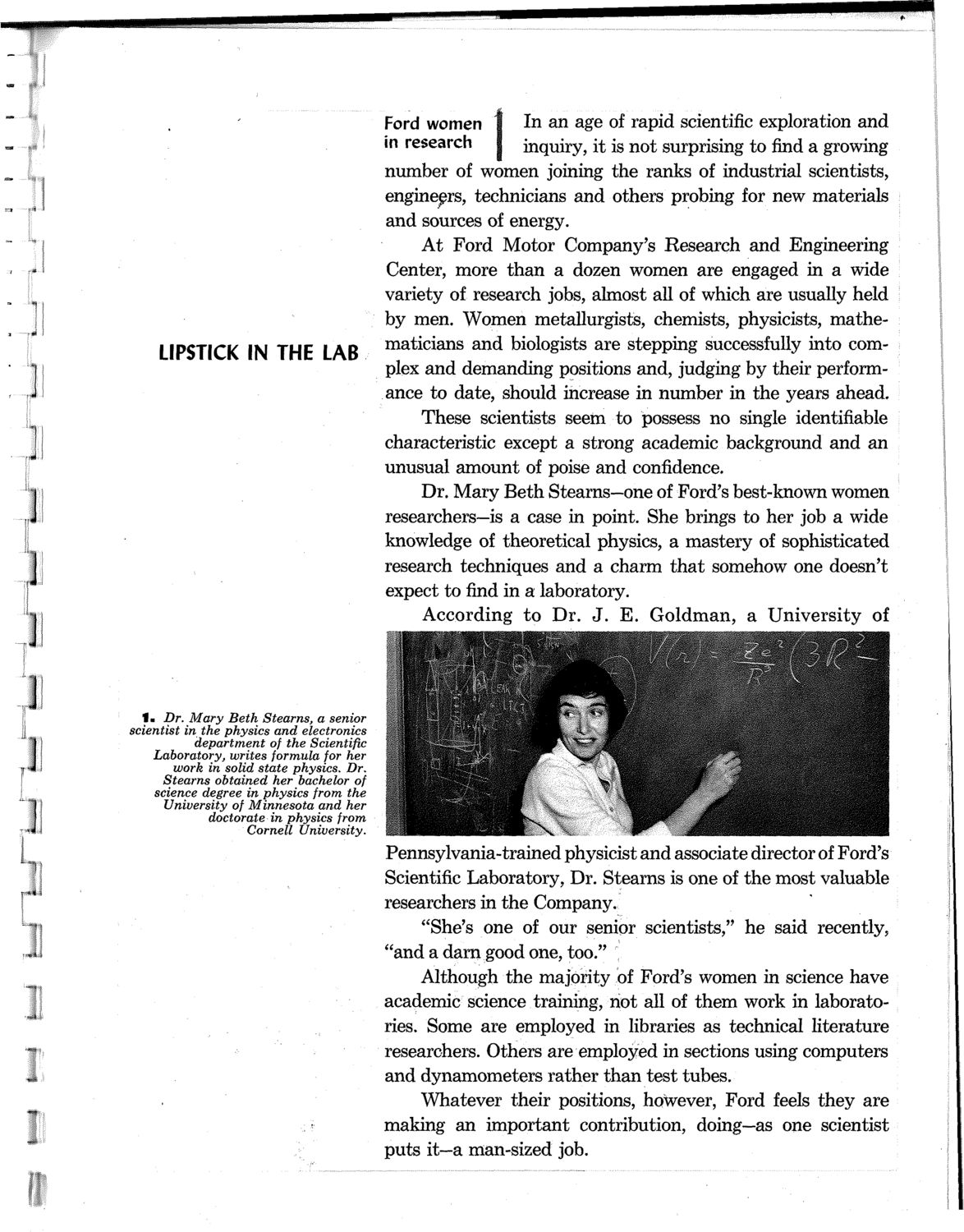| |
| |
Caption: SWE - News Clippings Book
This is a reduced-resolution page image for fast online browsing.

EXTRACTED TEXT FROM PAGE:
LIPSTICK IN THE LAB Ford women 1 In an age of rapid scientific exploration and in research 1 inquiry, it is not surprising to find a growing number of women joining the ranks of industrial scientists, engineers, technicians and others probing for new materials and sources of energy. At Ford Motor Company's Research and Engineering Center, more than a dozen women are engaged in a wide variety of research jobs, almost all of which are usually held by men. Women metallurgists, chemists, physicists, mathematicians and biologists are stepping successfully into complex and demanding positions and, judging by their performance to date, should increase in number in the years ahead. These scientists seem to possess no single identifiable characteristic except a strong academic background and an unusual amount of poise and confidence. Dr. Mary Beth Stearns—one of Ford's best-known women researchers—is a case in point. She brings to her job a wide knowledge of theoretical physics, a mastery of sophisticated research techniques and a charm that somehow one doesn't expect to find in a laboratory. According to Dr. J. E. Goldman, a University of L ft v * i » ? . . i LI • " • 1 . Dr. Mary Beth Stearns, a senior scientist in the physics and electronics department of the Scientific Laboratory, writes formula for her work in solid state physics. Dr. Stearns obtained her bachelor of science degree in physics from the University of Minnesota and her doctorate in physics from Cornell University. . V J & U P * »••*"• - Pennsylvania-trained physicist and associate director of Ford's Scientific Laboratory, Dr. Stearns is one of the most valuable researchers in the Company. "She's one of our senior scientists," he said recently, "and a darn good one, too." Although the majority of Ford's women in science have academic science training, not all of them work in laboratories. Some are employed in libraries as technical literature researchers. Others are employed in sections using computers and dynamometers rather than test tubes. Whatever their positions, however, Ford feels they are making an important contribution, doing—as one scientist puts it—a man-sized job.
| |